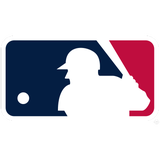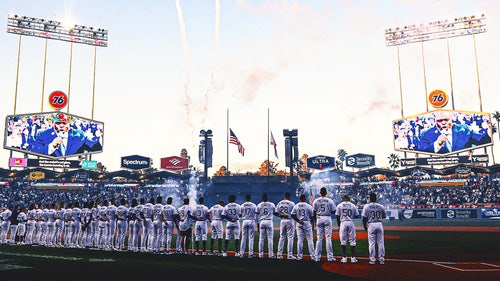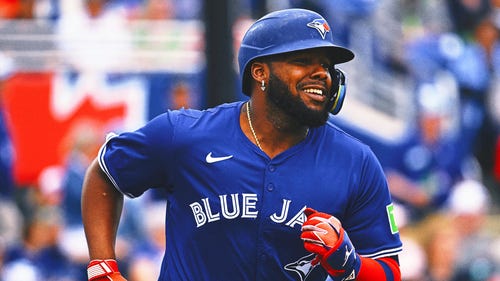
'Ball Four' still resonates 45 years after its debut
Sunday marked the 45th anniversary of the publication of "Ball Four."
In 1995 – about six years early, no? – the New York Public Library listed (and exhibited) its Books of the Century. Among the 176 books was precisely one sports-related book: "Ball Four." If I were going to recommend just one baseball book to someone between the ages of, say, 15 and 28, it would be "Ball Four."
When I was 8 years old, I read a book called "More Strange But True Baseball Stories." Weighted heavily toward the early part of the 20th century, the book taught me just how interesting baseball history could be. Ten years later, within the space of a couple of weeks, I read an oral history of the Brooklyn Dodgers and my first Bill James Baseball Abstract. But my early education wasn’t complete until a year or so later when I finally read an old dog-eared paperback copy of "Ball Four," Jim Bouton’s diary of his 1969 season with the Seattle Pilots and (briefly) the Houston Astros. And it was a revelation, just as that first Baseball Abstract had been.
In the late 1990s, I wrote an essay about my favorite baseball books, and of course "Ball Four" was on that list. You might imagine how I felt when a new edition of the book – "Ball Four: The Final Pitch" – came out in 2000 ... and I found this on the back cover:
“A great book, wildly entertaining, worth reading every two or three years.”
– Rob Neyer, ESPN.com
Not long afterward, I went to his website and ordered a signed copy. Shortly, I received an email from Bouton (at that point, we’d never met or corresponded). He wouldn’t accept my payment, but would send me a book, which showed up before long with a personal inscription.*
Later, he did allow me to purchase a signed photo of him wearing a Pilots uniform, which I’ve framed with the front cover of an old paperback edition of "Ball Four." Oh, and I suppose I’ve got a couple of signed baseballs floating around here, too.
All that was before I moved to Portland, Oregon, and met Rob Nelson, who first knew Bouton when both pitched for the Portland Mavericks (recently immortalized, of course, in a fine documentary that everyone should see). A few years later, Bouton was in town for a book festival and, with the help of Nelson, I arranged for a small dinner in a restaurant, with Bouton essentially the guest of honor. For a couple of hours in a private room, Bouton took all questions and regaled us with more tremendous stories than anyone could possibly deserve.
I just wish I’d been taking notes.
Since then, I’ve interviewed Bouton two or three times, and he’s always been generous with his time and vividly accurate with his memories. Meanwhile, I don’t need to read "Ball Four" every two or three years, because by now I’ve got the best parts memorized.
The most incredible thing about "Ball Four" is that it’s not, in the nearly half-century since, been equaled. Or maybe this isn’t so incredible at all. There have been very few baseball players like Jim Bouton, and very few baseball writers like Leonard Shecter, Bouton’s collaborator on "Ball Four." And maybe the nature of the universe dictates that a happy marriage between two such characters will occur, whether due to Providence or Coincidence or Intentions, just once every half-century or so.
Make no mistake, though: "Ball Four" is a great book.
Has its influence been overstated? I don’t have any idea. There were books before Bouton’s that fingered many of the same keys; most notably, Jim Brosnan’s "The Long Season" and Jerry Kramer’s "Instant Replay." In the wake of "Ball Four," there were many more of them. Five years after "Ball Four," his old teammate Joe Pepitone wrote a memoir that was far more profane, far more sexually explicit than Bouton’s.
There have of course been other tell-all (or -most) baseball books, and some of them have been pretty good. Bill Lee’s books, for example. There have been far more terrible books like this, the best example of which might be Lenny Dykstra’s. And I suspect that most of these books would have existed, even without "Ball Four." That’s just where things were heading in the ‘70s.
So I don’t know that "Ball Four" changed publishing in some meaningful way or that it changed the fundamental role of the sportswriter or that it changed baseball.
What I do know is that "Ball Four" taught me that even major leaguers lead rich, varied, often ridiculous personal lives, and they suffer from the same insecurities and self-doubt that plague the rest of us. "Ball Four" taught me – and continues to teach us, more than anything else ever will – what it’s like to play for a poorly managed expansion franchise with just one year to live. Jim Bouton and Lenny Shecter taught me, as much as anything I’ve read before or since, the efficacy of a well-turned phrase.
More than anything else, though, "Ball Four" was my "Catcher in the Rye." Turns out the “grown-ups” haven’t actually grown up that much, and the best we can do is find some humor in this unavoidable situation and come to accept our heroes fellow creatures for whom they really are. Warts (or beaver-shooting) and all.
For the best overview of "Ball Four"'s history and impact, please see Mark Armour's SABR BioProject story.










